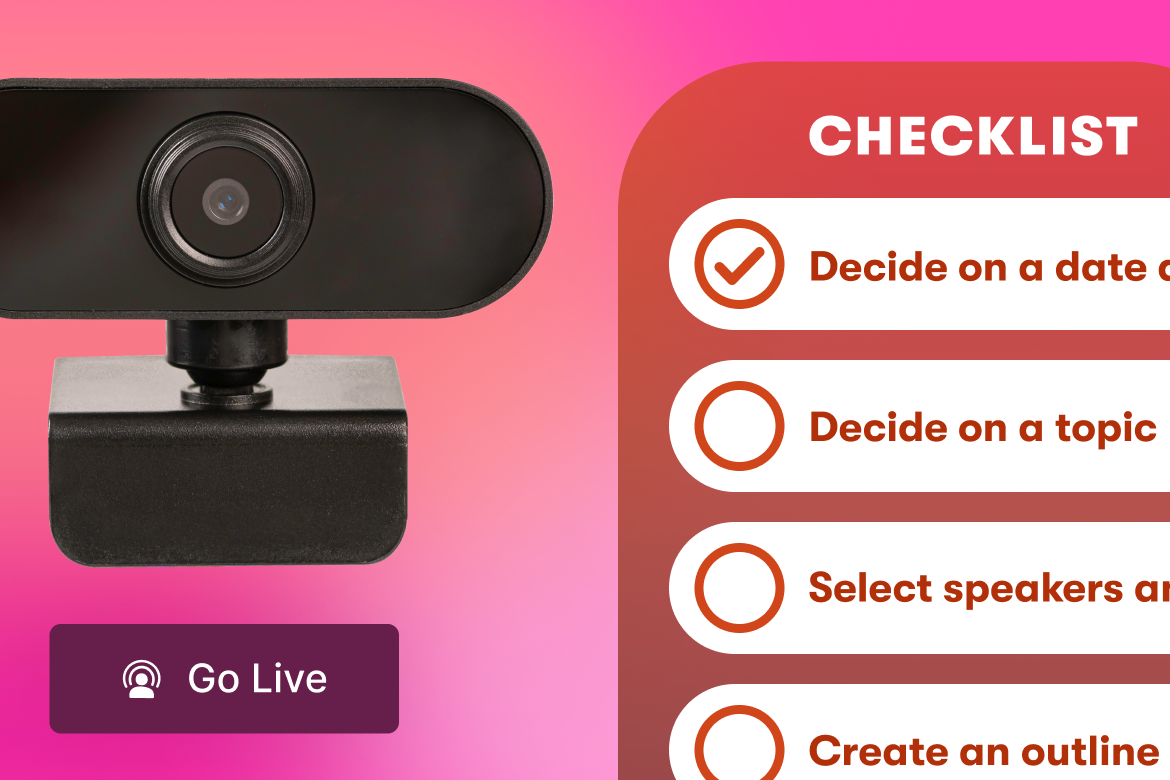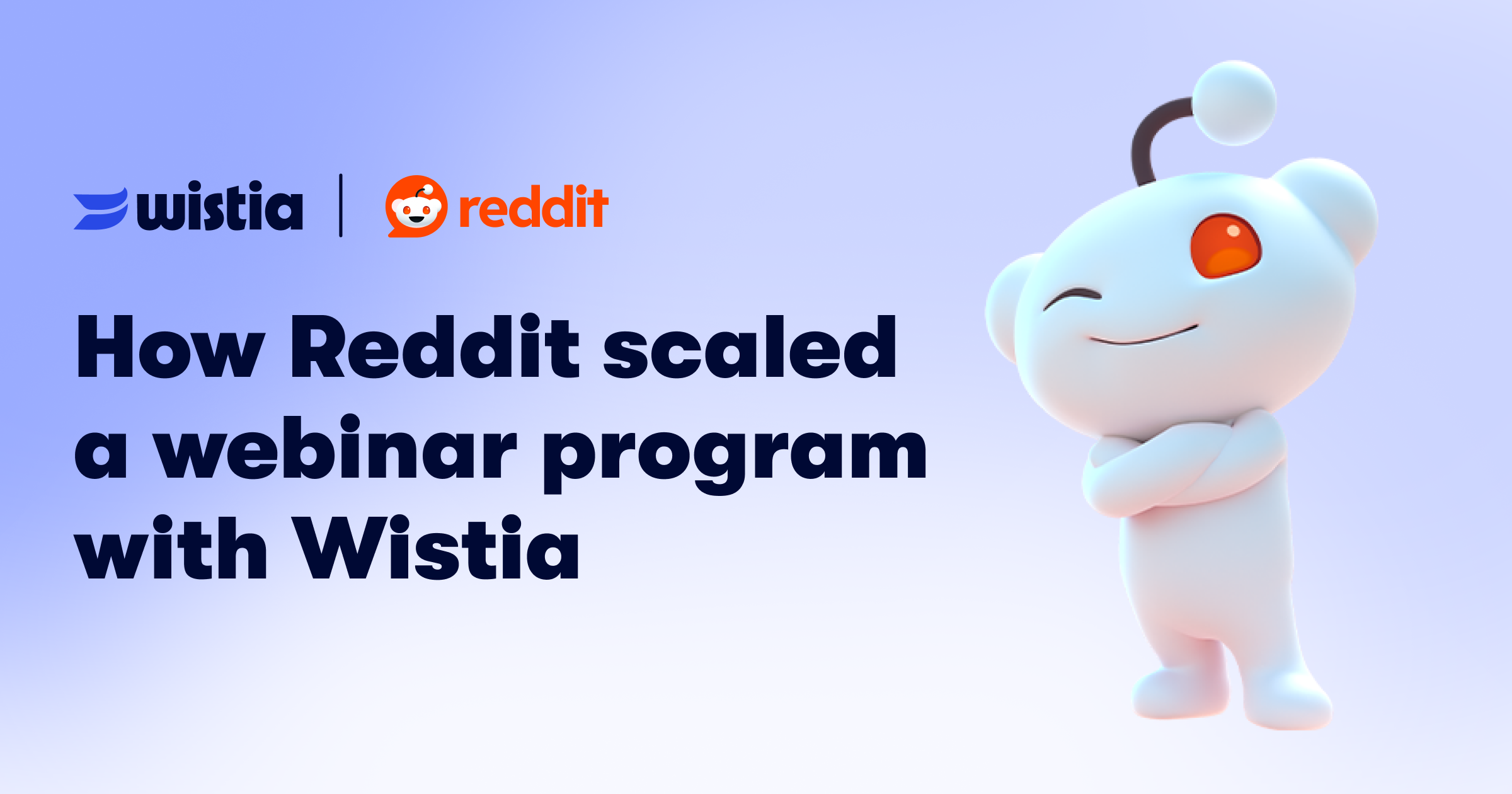Audience Development: How to Find and Reach a Niche Audience for Your Series
June 30, 2021
Topic tags
Is it just us, or do people have some pretty strong opinions about the pronunciation of “niche”?
Whether you’re on the side that says “nitch” or the side that says “neesh,” we’re not here to play favorites. But, we are here to tell you one thing that’s definitely true — identifying your niche audience will play a huge part in the production and promotion processes of your binge-worthy content.
In this post, we’ll dig into why it’s super important to nail down a niche audience for your content with insights from Wistia’s own Product Marketing Manager and audience development expert, Tyler Borchers. Learn more about the research tools you can use to identify the right audience and how you can reach these folks with your video series to grow your brand.
What’s a niche audience?
A niche audience is made up of folks who are super passionate about a specific topic. When you think about niche audiences for your brand, they’re basically your super fans. They will engage with your content, keep coming back for more, and share it with like-minded folks. The niche audience that you choose to make content for is a community that your brand should be uniquely positioned to talk to.
You might want to believe your current customer base is your niche, but niche audiences are found in targetable subcultures and interest groups that are tangential to your customer base. These are extremely active and passionate communities that a substantial number of your existing customers are a part of.
“You can make a great show with just a few dozen to a few hundred passionate subscribers who religiously follow everything that you do. I love true fans over big audiences. I created a series called ‘Whiteboard Friday’. Initially, it was just me holding up a whiteboard with a marker in front of a cheap camera in our office, explaining nerdy SEO concepts like 301 redirects. But eventually, it became the most successful content series in the company’s history.”Rand Fishkin
CEO and Co-Founder, SparkToro
This just goes to show that when you lean into a niche and really cater to their interests instead of casting a wide net, you can trust that your content will resonate with the right folks!
Finding your niche
Although you shouldn’t look at your entire customer base as your niche, you can start identifying your niche by understanding your existing audience. You should also consider what else your brand has permission to talk about outside of your product. If you create a show all about your product, that’s essentially an infomercial — not binge-worthy content.
Audience research
Let’s get into the research!
Ask yourself these questions about your existing audience: Who are they? Why do they care about your brand? And why do they want your product? As a marketer, chances are you already know the answer to most of these from identifying your buyer personas.
Next, you need to find topics these folks are passionate about. This is where identifying a subculture comes into play. By homing in on a specific facet of your audience’s personality and interests, you can more quickly uncover their motivations, broader professional interests, or even a unifying interest shared by the group.
“The key to engaging a niche audience is making content that adds value to a subculture. So make sure you deeply understand and connect with that audience.”Kristen Bryant
Marketing Manager, Wistia
Conduct surveys and interviews
To find out what makes your existing audience tick, conduct interviews or share a survey with your best customers. But, don’t just ask for their opinions on your product or service. Instead, ask questions that’ll help you better understand what this community cares about on a deeper level. This is something media companies do as well to understand their existing audiences.
Here are some questions you can ask:
- How do you spend your free time?
- What kind of websites do you regularly visit?
- What organizations are you a member of?
- What communities do you consider yourself a part of?
- What shows do you watch?
- What podcasts do you listen to?
- What sorts of things do you dislike?
- Do you have any big opinions about our industry?
- Do you feel strongly about the topics we want to cover on our show?
The more you understand your niche, the easier it will be to make ridiculously engaging binge-worthy content for them.
Research tools
You can also look for trending topics and conversations happening on sites like Reddit and Twitter to get at the heart of what people are talking about.
If there’s a subculture, there’s usually a subreddit. Explore the depths of Reddit to discover what kinds of topics your potential customers are regularly talking about.
Tools like SparkToro and Followerwonk can help you determine what topics and content your existing customer base is most readily engaging with on social media. Discover if there are any trends in how people identify themselves in their bios, and look at the content of tweets to determine the topics that ignite passionate reactions.
“Really identify the person you’re making your content for. Instead of making something that everyone will enjoy, narrow it down to something that one person will enjoy. That person should be an identity that you connect with, that your product connects with, that your story connects with. We shape our series in terms of how one person would perceive it. Then, if it resonates with that one person, they will likely share it with their friends and connections.”Colin Rosenblum and Samir Chaudry
Filmmakers, Colin & Samir
Reaching your niche
After you’ve created incredible content for your niche audience, how do you reach them? The key is to market like a media company to attract and engage your audience.
What does it mean to market like a media company? Well, media companies have been marketing their binge-worthy television shows and movies for years. There are a number of promotion strategies marketers can borrow from them to promote their own series and grow an audience. Let’s dig into a few!
Consistently promote show content
Planning a solid promotion strategy for your show should happen far in advance of your actual launch date. You should keep in mind the types of assets you’ll need to support your show, your show’s format, and your release cadence. Each of these will impact the scale of your promotion strategy.
If you want to consistently promote show content, you’ll need to create assets like show trailers and behind-the-scenes footage, creative assets for social media or email, and a dedicated page or Channel to host your content. Having a segmented list of contacts in your database will also be handy for creating engaging email campaigns.
“People have to hear something over and over again before they actually pay attention to it. So don’t be afraid to cross-promote things. The way I think about show creation is that it’s 80% promotion, 20% creation. 80% of your energy should be focused on how do you promote this thing.”David Cancel
CEO, Drift
Share content where your audience lives
When it comes to promoting your show on social media, you should already have a good idea of where your existing audience spends most of their time.
Building a social media promotion strategy to drive engagement and attract people to watch your show will be a huge part of your overall marketing strategy.
Across social media channels, it’s important to cater your content to the audiences you have on those platforms. You can also take advantage of many social platforms’ advanced targeting capabilities, which will make it easy to get in front of a niche audience.
Harness word of mouth marketing
Lastly, don’t underestimate the power of word of mouth amongst niche communities. When niche audiences find value in the content you create for them, they’ll recommend your content to other folks in their networks with similar interests and introduce them to your brand.
One way to increase your chances of getting your content spreading via word of mouth is by creating show promo kits for show guests and employees. Don’t be afraid to leverage your guests’ and employees’ audiences to amplify your reach!
Here’s an example of Rand Fishkin from SparkToro taking advantage of the promo kit we set him up with for Show Business:
As you can see, creating promo kits with high-quality assets for your guests or employees will make it simple and even exciting for them to want to spread the word about your show!
Find your nerds
You can call them “nitch” or “neesh,” but we like to call them nerds. When you find your nerds and create incredible content for them, you’re on your way to building a strong audience for your brand.






